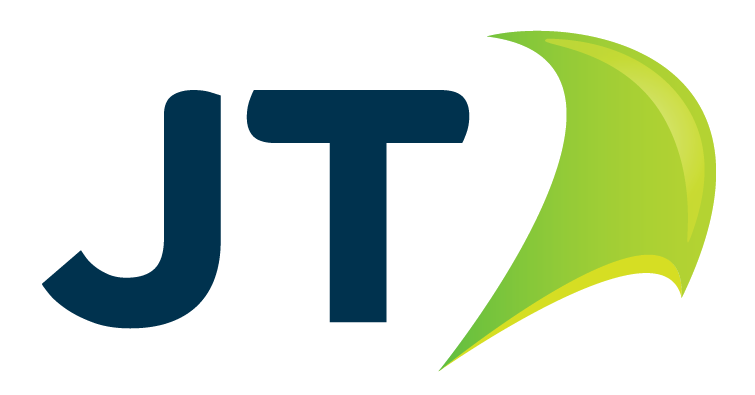Author:
Sunny Ajanaku
Design & Innovation Manager, JT
Sunny Ajanaku is JT’s Design and Innovation Manager and a fountain of knowledge on the subject of digital infrastructure.
From its relationship with traditional IT infrastructure to the transformational benefits a digital approach can have on an organisation, digital infrastructure is more than just a ‘digital version’ of your IT setup.
Implemented correctly with a well-considered plan and a set of goals, digital infrastructure can cut costs, enable new (and more efficient) ways of working, take tighter control of data security, and even enable a business to offer entirely new services to its customers.
In this article, we sit down with Sunny to understand what digital infrastructure means, and how to benefit from what this approach has to offer.
What are the components and the role of digital infrastructure?
To understand what we mean when we talk about ‘digital infrastructure’, we need to start by understanding traditional IT infrastructure.
”We've been familiar with the components of IT infrastructure for quite some time, it's been around for years. Digital infrastructure sort of goes a bit further than that.
“The components of an IT infrastructure include things like general IT services: your hardware, software, and facilities such as computer rooms, and data centres, whether it's shared or dedicated.
“ Hardware could be servers, network equipment like routers, other hardware like desktops and laptops and peripherals, they're all part of IT. We can even include BMS (building management systems) as part of IT.”
Digital infrastructure takes matters a step further.
“If we move into what a digital infrastructure is and why it's important, It goes beyond those IT components because it incorporates other digital components like cloud computing, IoT (Internet of Things), and AI (artificial intelligence) into the stack.
“ Traditional IT components need to be modernised to enable these additional components but all together they form the digital infrastructure stack.”
Why is digital infrastructure important?
“Digital infrastructure brings the benefits of rapid scalability and flexibility over traditional IT infrastructure.
“Data itself is more accessible, secure, and available from anywhere at any time. Then it gives you the ability to drive innovation a lot quicker. So, more agility in business operations.”
Unlike a traditional IT infrastructure approach that can feel chiefly an operational consideration, digital infrastructure is much more forward-facing.
“Digital infrastructure creates a competitive advantage; think of a restaurant, if they incorporate digital components into what they do and it's incorporated properly they can analyse the dishes that are most popular at what dates or times of the week.
“The restaurant can determine how best to adjust prices and how to minimise waste, thereby maximising margins. All of a sudden, just by introducing a few changes they get better insights into how they operate.”
The benefits of the digital infrastructure model span business types and sectors.
”Another example is a fiduciary business; they use digital tools to enable the creation of innovative service offerings such as predictive financial planning and automated portfolio management.”
The importance of digital infrastructure is not just in making things work, then, but also in unlocking new capabilities for an organisation.
Continue reading (6-minute read)
What challenges do organisations typically face with digital infrastructure?
From the perspective of an external partner, JT is well-positioned to witness and overcome the common challenges a business can face in adopting digital infrastructure.
”Challenges can vary from one organisation to another, but they usually boil down to a few key points.
“Typically, these are resistance to change, skills gaps, costs, and regulatory or compliance issues. There’s also my personal favourite which is adoption strategy, or rather a lack of it.
“ Organisations can sometimes lack clear objectives as to why they are embracing digital components into their infrastructure, or just simply adopt the wrong components at the wrong time. We've seen this over a number of years with cloud computing, where businesses just go straight in without actually having a clear strategy.”
The key, then, to successful digital adoption is knowing what it is you are looking to achieve.
“ It's crucial to plan changes at the organisational level. It's important to bear in mind that resistance to change is one of those big hurdles to adopting digital infrastructure.”
Compliance is another key challenge that organisations need to keep in mind. Whether it’s international data protection requirements or stringent industry regulations like those seen within financial services.
“Ensuring compliance with data protection laws, especially across multiple jurisdictions, can be challenging. It scares a lot of businesses because it can include legal penalties and even operational restrictions.
“Implementing cyber security measures, regular audits, and employee training are all acutely important. The skills gap is another common challenge because employees sometimes lack the skills required to manage and utilise digital tools effectively. Continuous training programs and outsourcing to experienced specialists where appropriate are always advised.”

How to audit and improve digital infrastructure within a company
“Auditing obviously can vary quite broadly, so it's important to understand the main purpose of that audit.
“ You can determine the audit to focus on security, performance, compliance, or overall infrastructure health. Alternatively, an audit can look at readiness for digital infrastructure.”
As with the need to have a clear plan when implementing digital components, it’s equally important to understand the scope of an audit to uncover valuable insights about your infrastructure.
“Using an example, company X within the construction industry decides it wants to set some key objectives to stand out from other businesses. They want to improve collaboration and communication, they want to increase productivity and efficiency, and they want to enhance safety measures for their employees while they are out on site.
“The audit itself in this case will focus on the digital readiness around connectivity, mobile application support, and IoT integration.”
In this example, setting the scope enables the organisation to uncover valuable gaps.
“The audit may determine that we need to start thinking about 5G reception on site as it's essential to communication.
“ The audit may also determine a need to deploy IoT sensors so that we can monitor site conditions. We can deploy wearables for the employees, for example, so they can monitor the health and safety of the workers, therefore providing real-time alerts of hazardous conditions.
“A digital infrastructure audit is about finding exactly what you're trying to achieve and how best to achieve it.”
Who designs, controls, and is responsible for digital infrastructure?
“There is no clear-cut answer to this because it depends on the size of the organisation, but there are five or maybe six points of control that we can look at.”
- IT management
- IT operations
- Information security
- Compliance
- Quality assurance
- External partners
“If you look at IT management, this could fall on the chief information officer who oversees the entire IT structure and ensures alignment with business goals. There could also be a structure in place that includes IT managers who are responsible for specific areas like network management or application support.
“In some businesses, overall IT management just falls on one IT manager who looks after the whole thing.
“ Information security is normally handled by the chief information security officer. The components are still not different in the digital world. They're all still there.”
As well as internal teams, it’s also common practice for organisations to lean on the expertise of external partners.
“I think it's quite important that businesses should ensure there is external expertise covering areas where there are skill gaps.
“Even the largest organisations on the planet outsource some of the IT. Very few organisations in the world expertly manage IT from end to end. But one thing is certain though, the ownership and accountability of the organisation's IT falls on the organisation itself.”
How to control digital infrastructure costs and maintenance
A key driver for the adoption of digital infrastructure is a desire to control costs, whether that’s reducing overall investment, or realising new efficiencies, and therefore finding additional margins in operational setups.
“In a digital world, there are tools available to control costs. There are chances businesses could actually save on expenses rather than spend more than necessary.”
A great example is in using digital tools to monitor and optimise application and resource allocation.
“Optimising resource usage and establishing a cloud budget framework is important. Regularly auditing modern workplace licenses, such as Microsoft 365 is important. There are numerous instances where there are gaps between the number of staff and the number of subscription licenses held. There are tools that actually do this for you.”
Taking control of costs within a digital infrastructure requires a different approach to that taken with traditional IT infrastructure, but it’s perfectly possible to achieve this in a scalable way.
“There's no reason to be scared about the cost because ultimately you can introduce cost efficiencies while benefiting from the adoption of digital infrastructure. Margin tends to increase if it's set up properly.
“Cost management extends beyond inventory, software, and hardware to assessing vulnerabilities and minimising or removing inefficiencies. It also includes things like user permission reviews as well.
“ It ensures the right people have continued access to necessary resources and this is conducted at regular intervals. It also ensures that access to leave us and join us are updated accordingly.
“On Microsoft Cloud, there's a tool called Microsoft Entra ID Governance that actually helps automate and streamline this process. It's all about ensuring the right tools are being used at the right time to achieve our goals.”
There are also common cost-related comments about the adoption of digital infrastructure such as cloud technology, but the cost won’t be the only priority for an organisation.
“Adopting scalable and flexible cloud solutions enhances resource management and promotes cost efficiency, it's a point you hear repeatedly. But, implementing robust security measures to protect against cyber threats, ensuring proper data management, and regular backups to prevent data loss should most likely be at the top of your pile.”

How will the digital infrastructure approach change traditional IT infrastructure?
“Traditional IT infrastructure is characterised by physical servers, on-premise computer rooms, and manual processes. While reliable, this often lacks the flexibility and agility required to meet business needs, it's not designed for rapid adaptation or efficiency.
“With digital infrastructure then, we can leverage cloud computing, IoT, and AI to create a more agile and responsive environment. ”
Digital infrastructure also changes the way organisations approach data management and security.
“Security is also enhanced because traditional IT relies on perimeter defences while digital infrastructure includes multi-layered security measures which can adapt to emerging threats in real-time, providing a more robust, dynamic defence mechanism.”
Agility and automation are key themes within the digital infrastructure environment and can therefore unlock new potential within businesses.
“Key advantages include things like enhanced productivity, providing data-driven insights, better decision-making, improving customer experience, and you can achieve cost efficiencies as well.
“I think businesses embracing digital infrastructure today are effectively paving the way for continuous innovation thereby staying ahead of the competition. If businesses haven't transformed the IT infrastructure to digital today, it's advisable to begin considering this change now, because businesses will undoubtedly benefit from it.
“I would say digital infrastructure equals traditional IT infrastructure plus cloud computing, AI and IoT”
How does JT approach working with clients within digital infrastructure?
“We tend to work with customers through advisory services first. We want to understand the business and what it’s trying to achieve. You shouldn’t just jump into digital infrastructure because we're talking about it, you don't want to make a knee-jerk reaction.
“JT's preferred customer is a customer who’s willing to listen, someone who can sit down, engage with us and plan together. That's how we work, we also have an ecosystem of partnerships that can be leaned on.”
Likewise, the scale of an organisation is less of a focus in the world of digital infrastructure.
“The one-person business, working in partnership with JT today, could grow into a 300-strong business tomorrow, so we don't discriminate between sizes of businesses.”
If you are about to embark on a digital journey, or if you are looking to make improvements, get in touch with JT to arrange a chat about what you’re looking to achieve.



